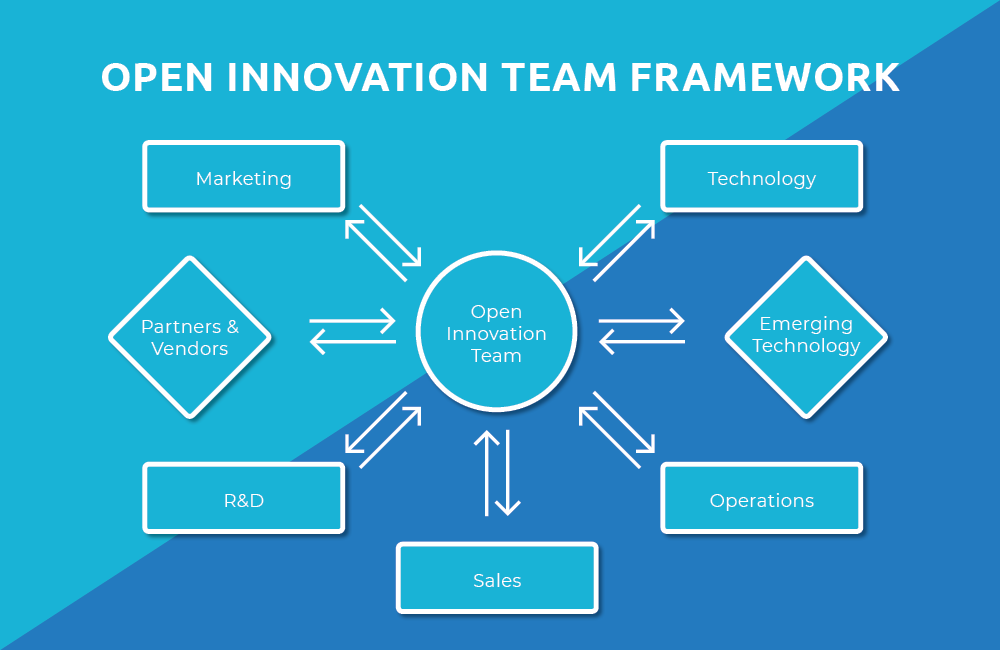6 Lessons For Building Innovation Models

Is your firm innovating? Is it innovating fast enough?
According to the PwC’s 2017 Innovation Benchmark study, 72% of corporate executives feel they’re not out-innovating their competitors. They’re losing the battle.
On the Inside Outside Innovation podcast, we’ve talked with a number of guests who are leading innovation within corporations. What we’ve learned is that corporates are innovating.
But, most importantly, the ones that are doing it best are learning from the frameworks and methodologies that work for startups. They’re applying these innovation models in ways that fit the corporate structure, and then learning how to accelerate the innovation process to deliver more ideas and create more value.
Let’s looks at some of the key lessons we’ve learned from our discussions — and how firms can do more to drive innovation forward.
1. Develop a clear stakeholder framework
The first and most critical component of corporate innovation models is to develop a clear framework for who is ultimately accountable for driving innovation forward.
To charge everyone with innovating everywhere — that is, to simply say, “Innovate! And…Go!” — is a losing strategy. Someone must be responsible. Someone — or some team — must take ownership over innovation within the firm, create processes, and define metrics.
In our interview with Navin Kunde from the Open Innovation team at Clorox, he explained the way their team works. As a partner, consultant, and incubator, the Open Innovation team provides innovation systems, processes, and resources to teams across the entire firm.
“We have people embedded with the business units,” explained Kunde. “So we have people working with people on a constant basis — so they know when the gaps emerge or where the teams need to go outside [the organization].”

They work to both proactively bring innovation ideas to specific teams as well as help teams bring their own ideas to life. By working as the liaison between internal teams and outside vendors, partners, and emerging technologies, the Open Innovation Team is responsible for framing opportunities, developing strategies, and executing projects alongside partners.
2. Choose metrics to measure progress
As with almost everything in business, innovation does not happen in a vacuum. There are finite resources available and those resources must be used in a way that is likely to create the most value for the firm.
So how do you measure innovation?
This depends, of course, on the firm’s strategic goals and where and how innovation is being applied.
Jack Elkins, Head of Innovation with the Orlando Magic, explained that one of their most important metrics is a fairly simple one: Number of experiments.
As he shared with us, while not every idea will be a winner, rapid ideation is highly correlated with more innovation and raises the chances of identifying a truly disruptive opportunity.
Measuring innovation in terms of dollars and cents may leave out much of the long-term or strategic value. So, it’s important to identify metrics that make sense for capturing
3. Balance, prioritize, and align innovation projects
Innovation is both iterative and disruptive. It can take the form of one massive projects that reshape an entire industry over the course of a decade or small, quick wins that go from idea to execution in a matter of days.
Corporates looking to innovate need a balance.
There’s a place for moonshots — but it’s also important to hedge your bets and make sure that some of your investment in innovation align with the immediate needs of the firm and short-term initiatives.

Elkins touched on this in our discussion.
“Sometimes you want to take advantage of an opportunity that pops up,” he explained. “We want to make sure we have a balance of strategic projects that come down from leadership, external projects, and one-off projects.”
This mix is a critical component to smart innovation strategy that isn’t too focused on one, massive project or specific undertaking but still has enough big, exciting ideas to keep people engaged and involved in the process.
4. Remove barriers to creativity
It’s one thing to have a process or a system for innovation, it’s another challenge altogether to unlock creative ideas.
Many teams and individuals within corporations become easily disillusioned with any call for “creativity”, expecting that ideas will be butchered or railroaded by bureaucracy.
Studies have found that maximum creativity and innovation are dependent on a state known as psychological safety. This state is one where individual team members feel the ability to express ideas — even if they’re unsure of their merit — to get feedback. And, more importantly, they feel that they can safely pursue projects and fail without facing repercussions or ostracization.
In the corporate world, this means carving out time and space where ideas and projects are free from the confines of normal, day-to-day operations.
Ep. 70 – Jyoti Shukla with Nordstrom – Inside Outside Innovation
“Give them space to run quickly,” said Nordstrom’s Senior Director of User Experience, Jyoti Shukla, in our interview. “Make sure they are safe to not have a 100% winning product because you’re trying to push.”
Elkins touched on this topic, too. He mentioned that their innovation lab is viewed as sort of an isolated area from the rest of the organization. Small things — like employees removing their name badge upon entering the lab — help to mentally separate this innovation space from everyday work.
5. Focus on the tapestry of your firm
Innovation should come from a position of strength.
As such, corporations looking to develop innovation models should first consider their core competencies and how they can continue to create value and build a competitive advantage in that area.
Katherine Manuel, senior vice president of innovation at Thomson Reuters, shared this insight in our interview with her. She explained how their organization has a core competency in journalism and data and they’ve looked for ways to continue to innovate to build up that strength.
6. Take the first steps
Most corporations are failing to innovate.
This opens the door for scrappy startups to develop new and exciting technology, innovative business models, or streamlined operations. These new companies are eating the lunch of established firms.
What’s holding so many companies back?
For most firms, it’s the matter of taking the first step to start to develop a strategy for how to move forward with innovation. It’s about understanding the frameworks that exist and how to create a culture and a process for innovation to happen.
The best way to do that is to learn from the people already doing it.
This is one of the important reasons we started Intersect and The Inside/Outside Innovation Summit. These are events for corporates and startups to come together — to learn from each other and to push innovation forward.
For corporates, it’s a truly unique opportunity to learn what’s working within other organizations, as well as offers networking opportunities with startups built to accelerate corporate innovation efforts.
It’s all about taking the first step.
(edited from an article originally published March, 2108 on Medium)
Listen to more of the Inside Outside Innovation podcast at Insideoutside.io or on Acast, iTunes, Sticher, Spotify, and Google Play

